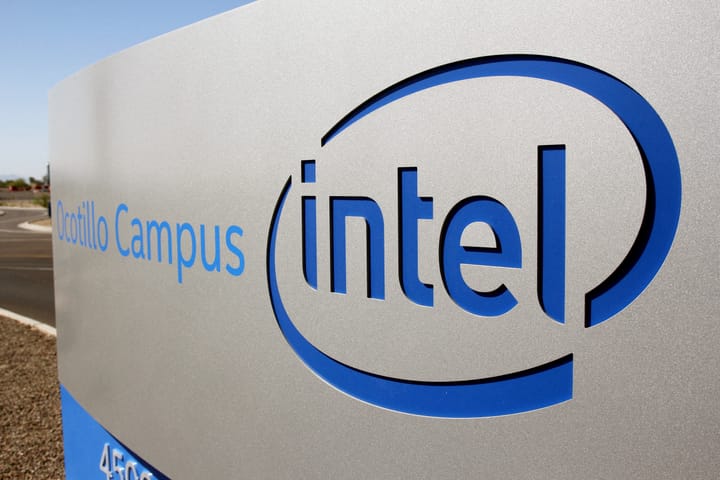Will the Biden administration raise the federal minimum wage?

A few minutes every morning is all you need.
Stay up to date on the world's Headlines and Human Stories. It's fun, it's factual, it's fluff-free.
It’s an ambitious policy goal that would dramatically affect the incomes of low-wage earners. Only time will tell if Democrats in Congress will actively pursue it.
With President-elect Joe Biden set to take office in less than two weeks, focus is shifting to what policies the new administration will tackle. With Democrats Raphael Warnock and Jon Ossoff having won their races in the Georgia runoff elections, Democrats are set to take control of the Senate, giving Biden more leeway to deliver on his campaign promises.
One of Biden’s economic promises was that he would support raising the federal minimum wage to US$15 an hour. This would more than double the current national minimum wage of US$7.25 an hour, a figure that has held steady since 2009 despite inflation and the rising cost of living.
The Democrat-controlled House of Representatives did pass a bill in July 2019 that would have gradually raised the national minimum wage to that level over the following six years. However, that bill was never taken up by Republican Senate Majority Leader Mitch McConnell.
At the time, some expressed opposition to the House’s bill, calling it “a devastating blow to small businesses.”
Nonetheless, raising the minimum wage to US$15 is a popular policy, with a 2019 Pew Research poll finding two-thirds of the country in support of it. As with most issues, there is a partisan divide, with far more Democrats supporting it than Republicans. Among the GOP, the divide is relatively small, with 57% against US$15 an hour and 43% in favor of it.
But even with Democratic control of both chambers of Congress, the fight for a US$15 minimum wage could be contentious. With a 50/50 split in the Senate, Republican senators could still filibuster or delay any legislation and prevent the chamber from taking a vote. If Democrats hope to pass any progressive legislation, they may need to abolish the filibuster, a controversial step.
Biden has also promised to index the minimum wage to the median hourly wage. This means that, as pay at the top end of the wage spectrum increases, the federal minimum wage would increase with it. This would counteract the current status quo in which the median wage in the United States is going up but those at the bottom remain stagnant.
It’s an ambitious policy goal that would dramatically affect the incomes of low-wage earners. Only time will tell if Democrats in Congress will actively pursue it.
What is the minimum wage?
Under President George W. Bush, Congress passed the Fair Minimum Wage Act of 2007, which incrementally increased the federal minimum wage from US$5.15 an hour to US$7.25. The final increment took effect on July 24, 2009. Since then, the national minimum wage has not increased.
As a result of the legislation, 31 states had to increase their minimum wages. Six states already had their minimum wage at US$7.25 an hour, while 13 states (and the District of Columbia) were set higher than that rate.
A minimum wage was first established under the Fair Labor Standards Act of 1938 (FLSA), which in addition to setting the minimum wage for hourly employees at US$0.25 an hour also established the 40-hour workweek. The FLSA provided for gradual increases in the minimum wage, including a five cent increase the following year and an increase to US$0.40 an hour in 1945.
The federal minimum wage has sporadically increased ever since, with amendments to the original law adding complexity to the issue.
Among the most substantial changes was the 1966 amendment that created a “tip credit” for employers. This allowed employers whose employees received tips to pay a lower wage with the assumption that tips would make up the difference. Currently, the tip credit is US$5.12, meaning the actual federal minimum wage for tipped employees is US$2.13.
There have been efforts to change this tip credit rule so all hourly employees receive the same minimum wage, but so far those efforts have been unsuccessful.
In 2017, there were 80.4 million Americans 16 or older who were earning an hourly wage. That number accounted for 58.3% of all workers earning a wage or salary in the country.
State-by-state minimum wages
While the federal government sets a mandatory minimum wage that all states must follow, most states (as well as numerous individual cities) have raised their own minimum wages over the last decade.
In the 2020 election, Florida voted in favor of a six-year incremental increase to a US$15 an hour minimum wage. The ballot measure, which also establishes annual indexing of the minimum wage starting in 2027, passed even though the state went for incumbent President Donald Trump.
Florida followed in the footsteps of other states that have recently passed similar minimum wage changes. Those include Washington, which, in 2016, voted for a yearly increase to the minimum wage through 2020, when it reached US$13.50 an hour. From January 1, 2021, the state’s minimum wage will be indexed. This year, the state’s minimum wage was raised to US$13.69 an hour.
The highest state minimum wage in the country is California, which became US$14 an hour on January 1 and will rise to US$15 an hour January 1, 2022.
Washington, DC has a US$15 hourly minimum wage, as does New York City. The highest minimum wage in the country is in Seattle, Washington, which is US$16.39 per hour for large businesses (US$15.75 for small businesses).
Currently, the minimum wage in 29 states and Washington, DC are set higher than the federal minimum wage. That includes 18 states and DC that index their minimum wage for annual increases.
Alabama, Louisiana, Mississippi, South Carolina and Tennessee have no set minimum wage, so theirs is set by federal law. Georgia and Wyoming both set their state minimum wages at US$5.15 in 2001 and never officially increased their rates, so again, they follow the federal law. These states would be immediately affected if the federal minimum wage was increased.
There are 13 states whose minimum wage is currently set at US$7.25 and would therefore also be affected by a federal minimum wage increase: Idaho, Indiana, Iowa, Kansas, Kentucky, New Hampshire, North Carolina, North Dakota, Oklahoma, Pennsylvania, Texas, Utah and Wisconsin.
Virginia has a current minimum wage of US$7.25 an hour, but was set to increase it to US$9.50 on January 1. However, citing the COVID-19 pandemic, Governor Ralph Northam delayed the increase until May 1, 2021. Like Florida, Virginia is set to gradually increase its minimum wage until 2026 when it will reach US$15 an hour. Annual indexing will begin the following year.
Have a tip or story? Get in touch with our reporters at tips@themilsource.com




Comments ()